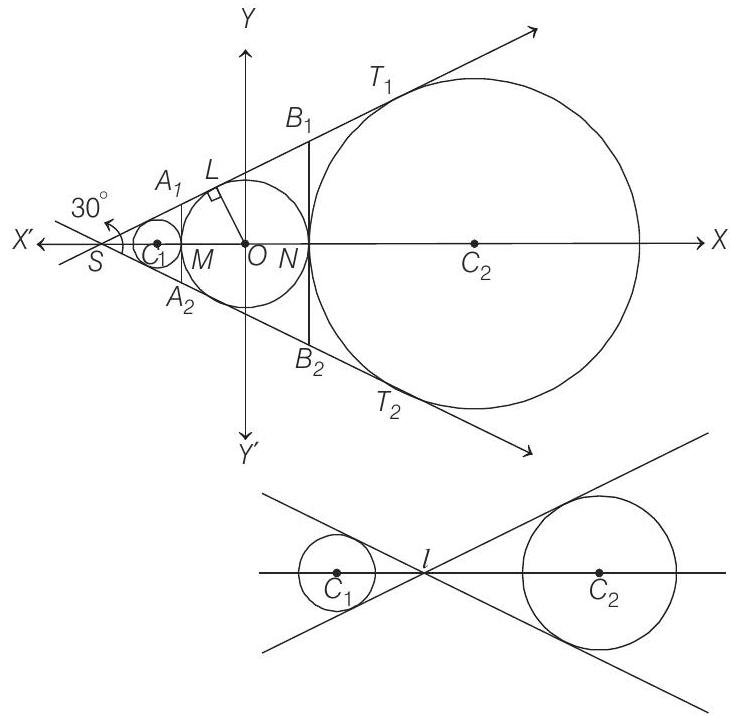Circle 5 Question 17
17. Let
(1999, 10M)
Show Answer
Answer:
Correct Answer: 17.
Solution:

From figure it is clear that,
Also,
Since,
The circle with centre at
The other circle touches the equilateral triangle
where
and
Thus,
Equations of common tangents to circle (i) and circle
Equation of common tangents to circle (ii) and circle
Two tangents common to (i) and (ii) are
Therefore, coordinates of I are
Equation of any line through I is
Therefore, these tangents are






